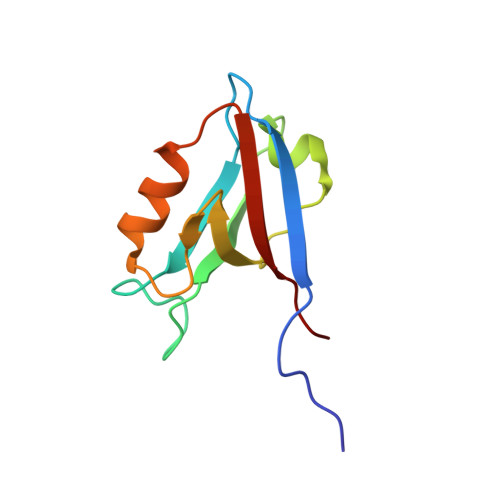The Plastic Energy Landscape of Protein Folding: A Triangular Folding Mechanism with an Equilibrium Intermediate for a Small Protein Domain.
Haq, S.R., Jurgens, M.C., Chi, C.N., Elfstrom, L., Koh, C.S., Selmer, M., Gianni, S., Jemth, P.(2010) J Biological Chem 285: 18051
- PubMed: 20356847
- DOI: https://doi.org/10.1074/jbc.M110.110833
- Primary Citation of Related Structures:
2X7Z - PubMed Abstract:
Protein domains usually fold without or with only transiently populated intermediates, possibly to avoid misfolding, which could result in amyloidogenic disease. Whether observed intermediates are productive and obligatory species on the folding reaction pathway or dispensable by-products is a matter of debate. Here, we solved the crystal structure of a small protein domain, SAP97 PDZ2 I342W C378A, and determined its folding pathway. The presence of a folding intermediate was demonstrated both by single and double-mixing kinetic experiments using urea-induced (un)folding as well as ligand-induced folding. This protein domain was found to fold via a triangular scheme, where the folding intermediate could be either on- or off-pathway, depending on the experimental conditions. Furthermore, we found that the intermediate was present at equilibrium, which is rarely seen in folding reactions of small protein domains. The folding mechanism observed here illustrates the roughness and plasticity of the protein folding energy landscape, where several routes may be employed to reach the native state. The results also reconcile the folding mechanisms of topological variants within the PDZ domain family.
- Department of Medical Biochemistry and Microbiology, Uppsala University, SE-75123 Uppsala, Sweden.
Organizational Affiliation:


















